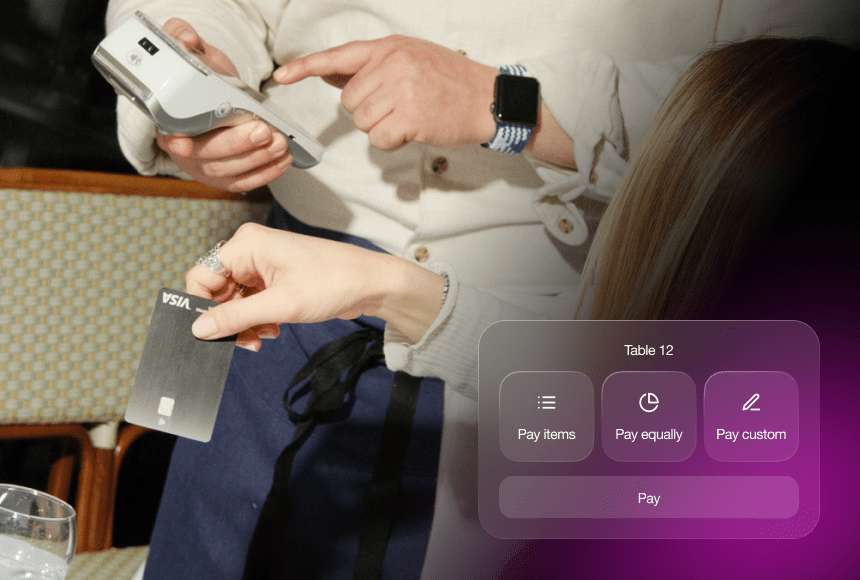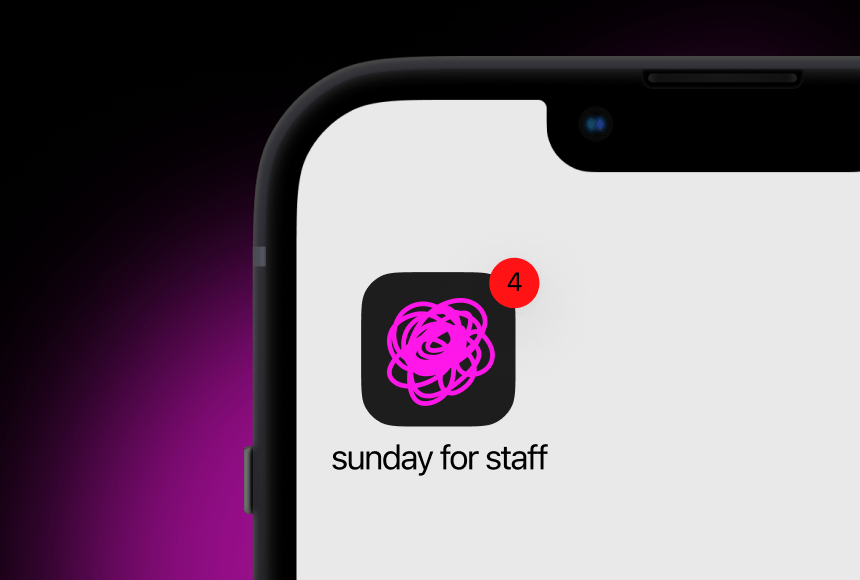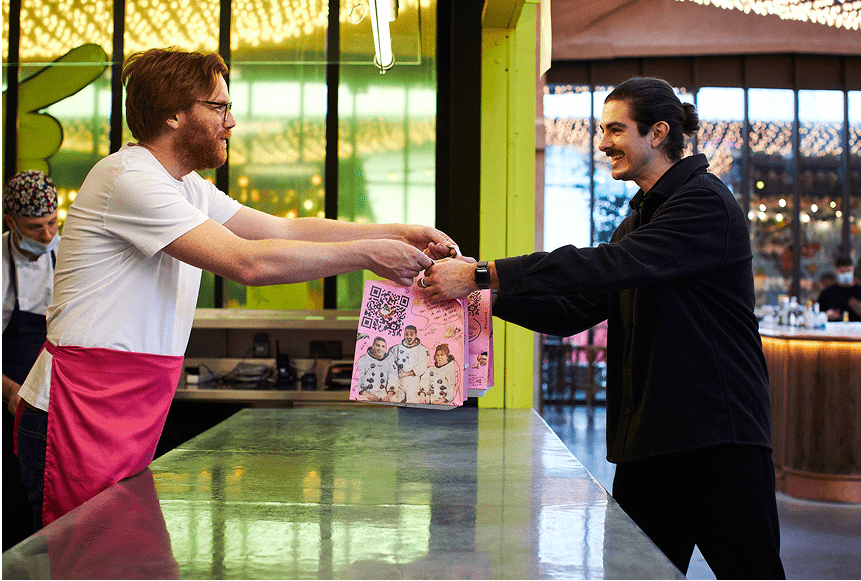How Scanning to Pay Is Revolutionising the Dining Experience
The Rise of Contactless Culture
Contactless payments are no longer the preserve of futuristic sci-fi novels; they’re woven into the very fabric of everyday life. In the UK, you’ll see bank cards being tapped on buses and at supermarket tills; you’ll see smartphone wallets used to purchase cinema tickets; and, increasingly, you’ll see QR codes on restaurant bills, inviting diners to scan with their phones and pay instantly.
Research shows that the United Kingdom is one of the leading nations in embracing contactless and mobile payments, with an ever-growing number of consumers preferring to settle transactions via their phones. According to Statista, more than 80% of UK adults own a smartphone, an important statistic highlighting just how accessible and convenient mobile payments have become.
This shift has given restaurants plenty of food for thought. Owners and operators must balance traditional payment methods (like cash or card terminals at the table) with customers who expect speed and convenience in virtually every aspect of modern life. QR codes have emerged as a proven tool to make this balancing act easier. These codes, when added to a customer’s receipt or bill, allow instant payment without waiting for a server to bring a physical device to the table. This might seem like a small detail, but in the fast-paced world of modern dining, small details can make a massive difference.
Why the Dining Experience Craves QR Codes
In many restaurants, the single biggest friction point for the diner is that final step: paying the bill. If you have an excellent culinary concept but present your guests with a clunky or slow payment process, the overall experience—and thus your reputation—can suffer. The longer guests spend waiting to pay, the more frustrated they may become, even if the meal was impeccable.
QR code payment technology is a breath of fresh air for diners and restaurant staff alike.
- Speed: No more waiting for staff to bring over a card terminal. Guests simply scan and pay in seconds.
- Convenience: Guests can review their bill and tip in one simple step, all on their own phone.
- Reduced errors: Digitally displaying the bill helps avoid mistakes that can occur when inputting amounts manually.
- Better table turnover: Faster payments free up tables for the next guests, maximising revenue.
- Customer comfort: Some diners dislike handing over cards or prefer a private tip option. QR codes let them handle everything discreetly at the table.
At a time when user-friendliness can mean the difference between a new regular and a one-time visitor, QR codes deliver frictionless transactions and a streamlined experience.
Breaking Down the Mechanics: How Does It Work?
From a diner’s perspective, the process is elegantly simple. Picture this scenario: You’ve just enjoyed a beautiful Sunday lunch of roast beef with all the trimmings. The server comes by with your bill, which now features a unique code. You use your smartphone camera to scan the code. In moments, a secure payment page appears in your phone’s browser, automatically displaying your final amount. You confirm the total, add a tip if you like, then hit “Pay.” A digital receipt is emailed or texted to you. That’s it—you’re done. No queue, no fussing with wallets.
Behind the scenes, the restaurant’s QR code payment solution is paired with a reliable payment processing platform. Each QR code is linked to a specific table or order reference, so the correct bill is always presented to the right guest. Modern QR code payment solutions (like those offered by sunday) also incorporate all the relevant security protocols, ensuring transactions are encrypted and compliant with payment industry standards.
More Than Just Payment: Additional Perks and Integration
One of the most understated benefits of QR code payment is the potential for seamless integration with other digital systems. Beyond simply paying, many codes allow diners to access itemised receipts, join loyalty programmes, leave reviews on platforms such as Google, and more.
With the right infrastructure, linking your restaurant’s payment solution to a guest-facing interface can yield powerful advantages:
- Review prompts: Encouraging diners to post a quick rating or review directly after paying can dramatically boost your digital presence.
- Marketing opportunities: Collect permission-based data securely, at the point of payment, to personalise follow-up promotions or invitations.
- Staff management: Digital tipping options often increase the overall tips collected. Many QR code solutions allow tip distribution at the end of the shift, saving administrative hassles.
In short, a simple QR code can open doors to a more robust digital connection with your customers.
A Quick History Word-Bite: QR Tech in a Nutshell
While QR codes might feel like a modern invention, they date back to the 1990s. Originally developed in Japan by Denso Wave, the technology was used to track automotive parts. Over time, it found its way into marketing campaigns, product packaging, and public transport schedules around the globe. The technology soared in popularity especially in Asian markets, where scanning codes became second nature for both transactions and obtaining information.
It wasn’t until smartphones with built-in QR scanning capabilities became ubiquitous that codes really began to spread in Europe and the UK. Restaurants, always on the lookout for new ways to differentiate their services, started embracing them to address a longstanding pain point: slow, often awkward checkouts.
Real-life Example: Quick Meals, Quicker Payments
Imagine John, who runs a lively bistro in Manchester city centre, where the lunch rush can be hectic. Before adopting QR code payments, John’s staff spent a lot of time juggling between half a dozen card terminals, racing to each table to collect payments during peak hours. Patrons in a hurry to get back to work grew impatient.
After implementing QR code technology, John noticed immediate improvements:
- Faster turnover: Tables cleared more quickly because guests settled their bills promptly.
- Reduced staff strain: John’s team could circulate at a calmer pace, focusing on service quality instead of managing queues for payment devices.
- Higher satisfaction ratings: Online reviews praised the “slick and easy” payment process.
In the grand scheme of restaurant operations, this accelerated checkout might sound minor, but when margins are tight, every extra table turning adds up. And when customers leave happy, positive word-of-mouth can be invaluable.
Addressing Security Concerns
Restaurant owners often ask the same question: “Are QR code payments secure?” It’s a fair concern. However, established QR payment providers employ robust security measures. Each code is dynamically generated for each transaction or table, minimising the risk of fraudulent duplication. Moreover, encryption protocols ensure customer data and card details are safe.
Consider these best practices for optimum security:
- Partner with a reputable QR code payment provider with PCI DSS (Payment Card Industry Data Security Standard) compliance.
- Confirm that transactions are processed through secure payment gateways that use encryption.
- Regularly train your staff to monitor for suspicious activity and encourage diners to check that the URL they’re accessing is legitimate.
When properly implemented, scanning a QR code to pay can be just as safe—if not safer—than handing your card over to a server or typing your card details into an online form.
Boosting Tips and Hospitality Culture
Tipping is deeply embedded in UK dining culture, though it’s sometimes overshadowed by complexities over card payments and staff distribution. QR codes can encourage a healthier tipping culture by allowing diners to choose from suggested tip percentages or input a custom amount with ease.
These small additions can go a long way in boosting staff morale and promoting a spirit of hospitality. When servers know tips are streamlined, they can focus on delivering that top-notch experience rather than worrying about missed gratuities. Additionally, some QR code systems help you automatically split tips across staff, making the backend process more transparent.
The Environmental Angle: Receipts and Beyond
The paper bill with its lengthy itemisations, along with printing duplicates, can add up to significant waste. When you integrate a payment solution through QR codes, there’s often an option for customers to receive digital receipts. Rather than printing them automatically, let diners opt for an emailed or text-based receipt.
It’s a small yet important step toward greener operations:
- Less paper: Reduces waste from unclaimed receipts and minimises your restaurant’s environmental footprint.
- Reduced costs: Printing receipts constantly can become a notable overhead when you tally the paper, ink, and maintenance.
- Organised records: Customers can easily store receipts in their email or phone, making them less likely to lose them.
From small cafés to fine dining establishments, sustainability is high on customers’ priority lists, and showing a commitment to reducing paper waste can go a long way in earning respect and loyalty.
Implementation Strategies for Restaurant Owners
If you’re thinking about adopting QR code payments in your establishment, you might be wondering how to roll it out effectively. Consider these points:
- Choose the right provider: Not all QR code payment systems are created equal. Look for user-friendly interfaces, robust security, and flexible customisation options. Providers like sunday tailor their solutions specifically for restaurants, offering features beyond basic payments.
- Pilot before a full launch: Test the system in a small subset of tables or on quieter nights. This helps you fine-tune staff training and address any hiccups.
- Staff engagement: Your servers, hosts, and managers need to understand how the system works and be enthusiastic about it. Make sure they can answer common diner queries (“Is it secure?”, “What if my phone’s camera doesn’t work?”).
- Marketing and signage: Make it clear that you offer convenient QR code payments. Table tents, minimal signage on the menu, or a quick mention by the server can encourage guests to try it out.
- Integrate tipping and review prompts: If you want diners to leave a tip or rate their experience, insert a gentle prompt in the payment flow.
Remember, introducing QR code payments can be an easy or a bumpy ride depending on how well you prepare. If done correctly, your patrons will come to appreciate the faster, smoother payment experiences and your staff will have more time for real hospitality.
Overcoming Possible Hurdles
As with any innovation, there can be growing pains. Here are a few common obstacles restaurant owners encounter, along with practical suggestions on how to adapt:
- Diners unfamiliar with QR codes:While most smartphone users understand how to scan a code, some may still need guidance. Train your team to offer a short explanation if needed, and provide a brief instruction next to the printed code.
- Connectivity issues:A strong Wi-Fi or mobile data connection is crucial for successful scans. If your restaurant suffers from spotty internet, invest in reliable Wi-Fi or consider installing signal boosters, ensuring customers don’t get frustrated mid-payment.
- Backend integration complexities:When setting up a new system, integration between your point-of-sale system and payment platform can seem daunting. Work with a provider that offers dedicated support. Good providers will help map out your existing processes and ensure minimal disruptions.
- Physical layout challenges:If your restaurant has outdoor seating or multiple floors, you’ll need to ensure the system covers all corners. Producing unique codes per table or zone can help streamline service in larger spaces.
By tackling these hurdles head-on, you can pave a smooth path toward integrating QR code payments that suit your restaurant’s specific needs.
Standing Out in a Competitive Landscape
The restaurant industry, especially in bustling UK cities, can be fiercely competitive. If you want to distinguish your brand, you need to stay ahead of the curve. Offering QR codes isn’t just about introducing another gimmick; it’s about meeting consumer expectations in a digitally evolving market.
Those who embrace technology often:
- Attract tech-savvy clientele: Younger diners and busy professionals appreciate speedy, hassle-free checkouts.
- Earn media coverage: Innovation grabs attention. Local press or foodie bloggers might pick up on your updated payment process, especially if you integrate it with other digital or eco-friendly pushes.
- Build loyalty: When guests see that you value their time and comfort, they’re more likely to become repeat customers.
In an environment where dozens of restaurants can be found in a short walk, these advantages play a major role in building your reputation and your financial success.
Planning for the Future of Payment
As technology marches on, focusing on convenience remains a restaurant owner’s best strategy for success. Mobile-first services have truly reshaped how people order meals, browse menus, and handle transactions. In the near future, we could see:
- Augmented Reality (AR) enhancements: Diners may scan a QR code that not only processes the bill but also shows 3D visuals of dessert specials or recommended pairings.
- Deeper personalisation: Repeat customers might see tailored deals or loyalty benefits pop up when scanning to pay.
- Voice interface integration: Voice-activated devices could combine with QR code solutions to create even smoother, more inclusive experiences.
These forward-looking possibilities highlight the flexibility of QR codes as a gateway. Once you’ve established the foundation for scanning at tables, you’re well-placed to embrace next-generation experiences and maintain a competitive edge.
Why This Technology Suits All Types of Eateries
When you think of scanning a QR code for payment, you might picture a hip café in Shoreditch filled with latte art and artisan pastries. But the truth is, QR code payments aren’t just for trendy hotspots. They can bring benefits to any style of restaurant:
| Type of Restaurant | Key Benefits of QR Codes |
|---|---|
| Family-Friendly Chains | Less waiting for parents and kids to settle. Happy families, faster table turnover. |
| Casual Diners | Speedy, fuss-free payments suit busy diners wanting quick bites. |
| High-End Bistros | Discreet, elegant settlements mean the table experience flows without interruption. |
| Hotel Restaurants | Integration with room-charging systems. Guests can pay and tip in one app if integrated properly. |
| Food Truck Parks | Short lines, fewer hardware requirements, and easy ways to accept payments on the go. |
From large franchised chains to boutique eateries, any place looking to optimise payments and enhance the customer experience can incorporate QR code solutions with relative ease.
Staff Perspective: A Win for Morale
At first glance, implementing QR code payments may appear to reduce staff interaction with customers. But it’s actually an opportunity for servers to focus on what matters most: hospitality.
Instead of running around collecting cards, waiting for card machines to connect, or sifting through receipts, servers can engage in real conversation, recommend dessert wines, or share interesting tidbits about the menu’s local sourcing. Employees typically appreciate having more time to connect with diners and less time battling administrative tasks.
Moreover, QR code solutions often bring clearer, more transparent tipping mechanisms, which can improve staff satisfaction. Everyone understands how tips are allocated, and servers feel confident that their efforts are reflected in the final tip calculation.
A Warm, Personal Touch with Technology
There’s a misconception that technology always depersonalises experiences. But, as many restaurant owners have discovered, quite the opposite can happen. By removing friction from the payment process, you free up time to engage guests in a warm, human way.
Yes, there’s a scan and tap element involved. Yet, this digital convenience paves the way for restaurateurs to add those personal flourishes—like a server who remembers a returning customer or asks about a previous dish they enjoyed. Embracing technology is not about replacing human connection; it’s about enhancing it. And in a people-centric business like hospitality, that’s a major advantage.
Evaluating the Financial Implications
If you’re weighing up the costs and benefits, it’s worth crunching some numbers. Typically, QR code payment systems charge a transaction fee, just like most standard card machine providers. However, the gains in efficiency and table turnover often offset those fees.
- Faster turnover: When bills are settled rapidly, you might fit in extra seatings per day, especially during busy periods.
- Higher checks: Offering an effortless way to pay can encourage diners to order that extra drink or dessert since they know they won’t face payment hassle.
- Improved staff productivity: Less time spent on manual payment tasks can translate to servers focusing on upselling or better table service.
- Potential for higher tips: Clear digital prompts can gently guide customers to tip fairly, benefiting your employees and enhancing job satisfaction.
As you examine the financial implications, these positives often outweigh the cost of adopting the tech—particularly for mid- to high-volume establishments.
When Not to Use QR Codes
While QR code payments are highly versatile, there may be scenarios where they’re less helpful. For instance, if your venue is located in an area with very limited mobile data coverage and no Wi-Fi, your customers might struggle to access the digital payment page. Similarly, if a significant portion of your clientele is uncomfortable or unfamiliar with using smartphones (certain rural or specialised demographics), you might need alternative payment options.
Having a blended approach—where you offer QR codes and traditional payment methods—can bridge any gaps. Flexibility remains key.
Encouraging Feedback and Loyalty
A massive perk of digitising payment is the ease of collecting feedback. Some QR code payment portals let customers leave a short review or provide a quick star rating immediately after paying. This is the moment when the dining experience is fresh in their minds, making them more likely to share genuine, detailed feedback.
Furthermore, integrating loyalty systems is simpler than ever with QR payments. Let’s say a regular scans the code, and the system automatically updates their loyalty balance or offers them access to special promotions. This kind of personal touch can keep diners coming back again and again.
Final Thoughts: QR Codes as a Key Ingredient in Modern Dining
Scanning a code to pay might once have sounded futuristic, but it’s now a staple in many UK restaurants. The hospitality industry’s emphasis on customer satisfaction dovetails perfectly with QR technology’s ability to expedite and enhance the payment experience. From quicker table turnover to higher tips, from operational efficiencies to robust review and loyalty integrations, the rewards are substantial.
For restaurant owners, the message is clear: If you want to reduce friction in your payment process and stand out in a crowded field, QR codes on the bill offer a straightforward, cost-effective solution. Pair them with a warm, human approach to service, and you’ll retain your restaurant’s distinctive character while offering all the convenience diners have come to expect.
Frequently Asked Questions (FAQ)
Do I need to provide physical receipts if I use QR code payments?
You’re not obliged to provide a physical receipt in all situations, but many restaurants offer them on request. Most QR solutions will send a digital receipt via email or text, which reduces paper usage and keeps customers happy.
What if my customer’s phone camera can’t scan the QR code?
In very rare cases, a phone camera might struggle to read the code if the code is printed incorrectly or if the lighting is very poor. Offer a well-lit area, or give the customer an alternative link (for instance, a short URL) to open the payment page. Make sure staff are trained to help if a scan doesn’t work.
Is there a risk of hackers tampering with the codes?
If you partner with a reputable provider and print your codes securely, the risk is minimal. Some restaurants rotate or customise codes so they’re valid only for a limited time, further enhancing security. Always verify that the URL belongs to your official payment platform.
Will integrating QR payments be costly for my restaurant?
Commonly, QR solutions incur transaction fees similar to card payments. However, you may find that you save on paper, reduce staff workload, and see higher guest satisfaction—often offsetting any additional costs. It’s wise to compare providers and discuss fee structures before committing.
How can a QR code on the bill help me get more online reviews?
Many QR code payment pages can include a simple prompt nudging diners to leave a quick review on Google or another platform. Because this happens right after the dining experience, customers are more inclined to share positive impressions on the spot.
Find out more today
Drop us your details below and we’ll reach out within the next 24
All your orders – in and out.
Our mobile ordering solution allows your customers to order and pay whenever they are ready with an integrated QR code.




